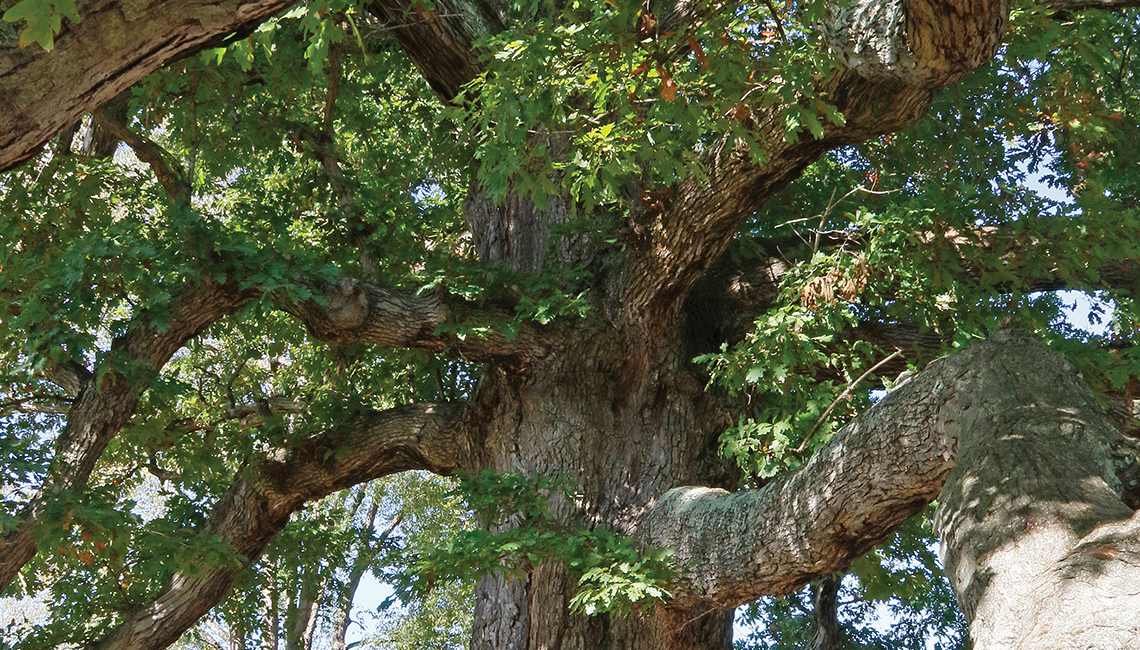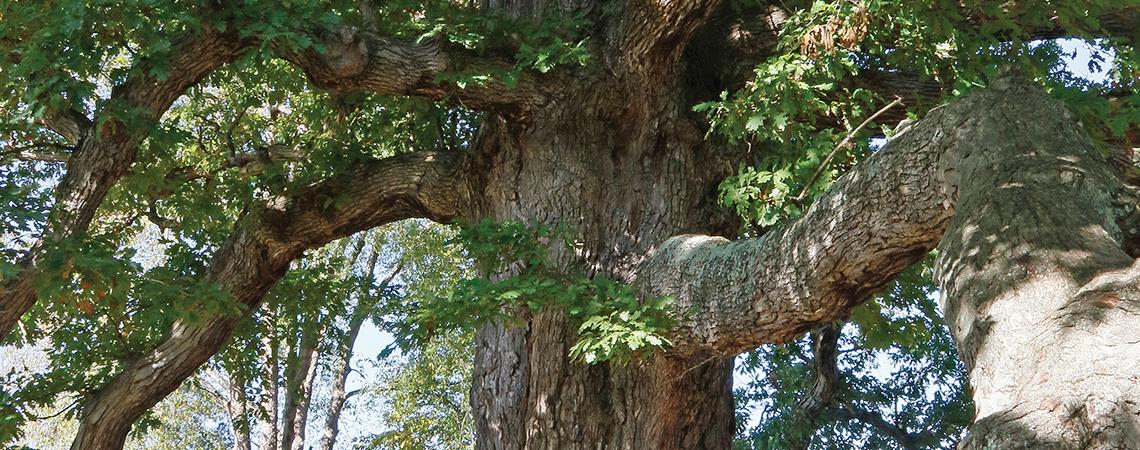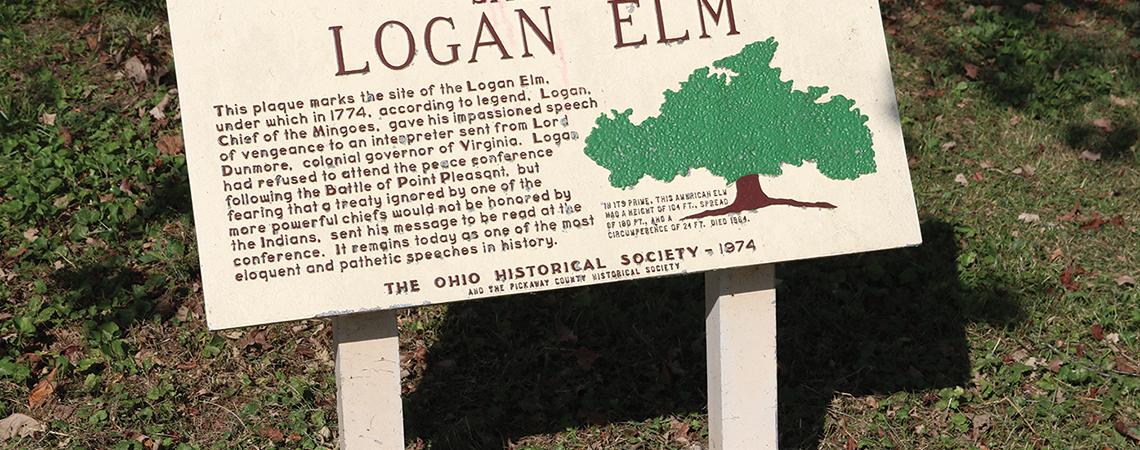Logan’s Lament is well known in Ohio history. Chief Logan of the Mingo tribe of Native Americans uttered the short speech in October 1774 from beneath a huge, spreading elm tree in his camp, located a few miles south of what is today Circleville, Ohio.
What Logan was specifically lamenting is less well known — and the incident is both intriguing and tragic.
Logan (known as Talgayeeta to his Indian brothers) had always considered himself a friend of the white man — so much so that his fellow tribesmen even mocked him for it, claiming he would one day regret his beliefs.
Unfortunately, they were right.
The Logan Oak, which stands in a cemetery near Logan, is estimated to be more than 600 years old.
In April 1774, Logan was away hunting when members of his family and some friends ran afoul of a settler named Daniel Greathouse and his band of border thugs, all of whom hated Indians. The Greathouse party first feigned friendship, then once they had gained the Indians’ confidence, murdered them in cold blood. Among those killed were Logan’s wife, brother, sister, brother-in-law, and nephew, as well as a fetus — a future nephew — that was slashed from his sister’s pregnant womb.
In retaliation, Chief Logan and small parties of Mingo and Shawnee took to the warpath, vowing to kill 10 whites for each Indian who had been slain. Logan personally vowed to take the lives of 20 settlers in retaliation for the death of his unborn nephew. Months later, after the killing had ceased, Logan issued his lament (in part):
“During the course of the last long and bloody war, Logan remained idle in his tent, an advocate for peace. Nay, such was my love for the whites that those of my own country pointed at me as I passed and said, ‘Logan is the friend of the white man.’ I had even thought to live with you, but for the injuries of one man … [who,] last spring, in cold blood and unprovoked, murdered all the relatives of Logan, not sparing even my women and children. There runs not a drop of my blood in the veins of any living creature. This called on me for revenge. I have sought it. I have killed many. I have fully glutted my vengeance … Who is there to mourn for Logan? Not one.”
The Indians had long memories, reserving their greatest tortures for their greatest enemies. Daniel’s brother, Jacob, who also played a part in what came to be known as the Yellow Creek Massacre of Logan’s relatives and friends, was on that list. In 1791, according to legend — a full 17 years later — the Indians captured Jacob and his wife. The method the warriors used to kill the pair is too gruesome to describe here; suffice it to say that Jacob’s wife died relatively quickly, but Jacob himself suffered hours in unspeakable agony before death finally came.
Today, the Logan Elm is long gone; the tree finally succumbed in 1964 to disease and repeated lightning strikes. In its prime, it measured 104 feet tall, its branches spread 180 feet wide, and the circumference of the trunk was 24 feet. Fortunately, the place where it once stood has been preserved by the Ohio History Connection as the Logan Elm State Memorial and is open to the public.
If you’d like to visit a living tree of similar size, the Logan Oak stands in the northeast corner of the Old Logan Cemetery in Logan, Ohio. A plaque there claims that the white oak is more than 600 years old, which is possible for such a long-lived species. If that age is accurate, the Logan Oak was already a century old when Christopher Columbus began his journey toward North America in 1492 and nearly 400 when Logan lamented under the nearby elm.
W.H. (Chip) Gross is Ohio Cooperative Living’s outdoors editor. For more information on the Logan Elm State Memorial, visit here.











